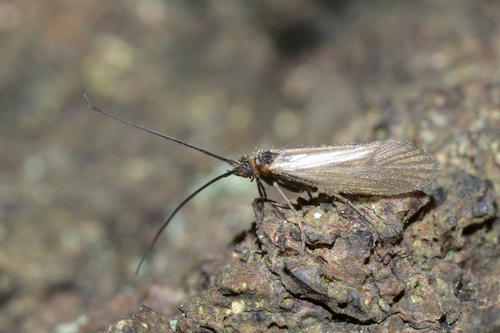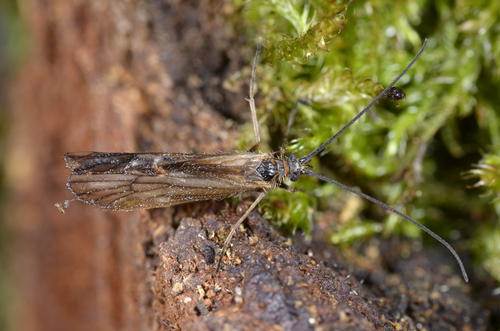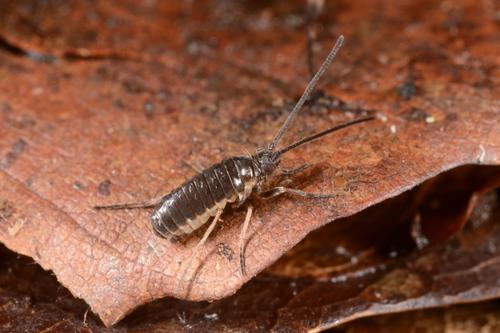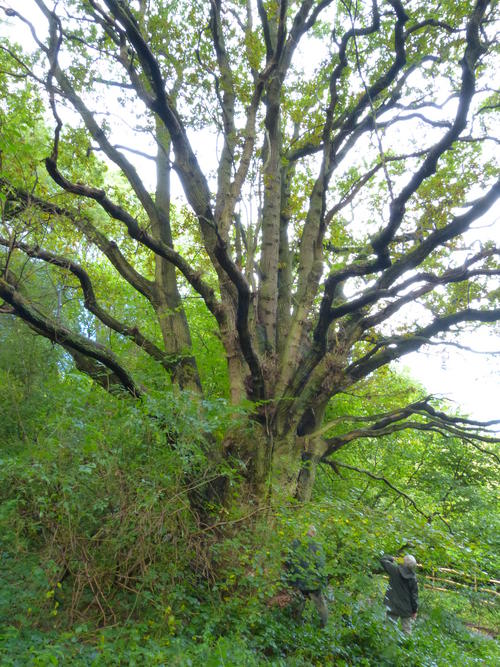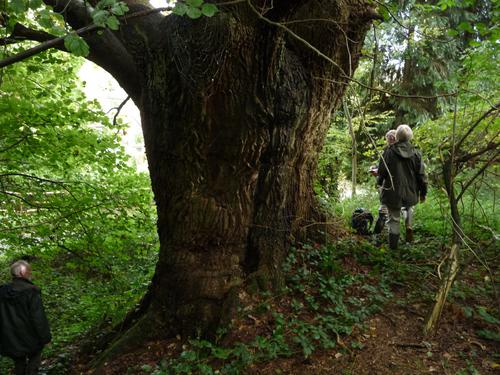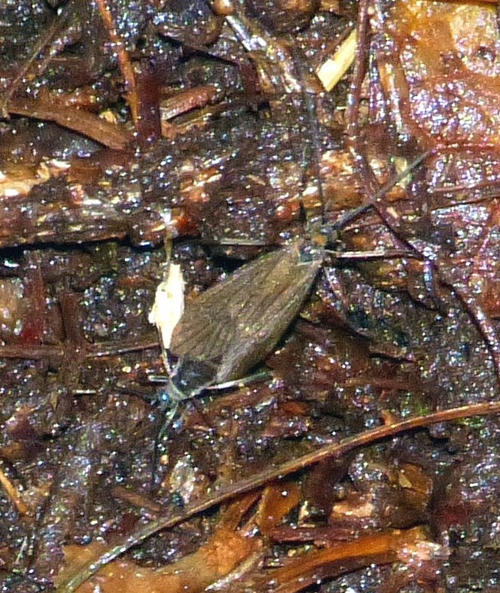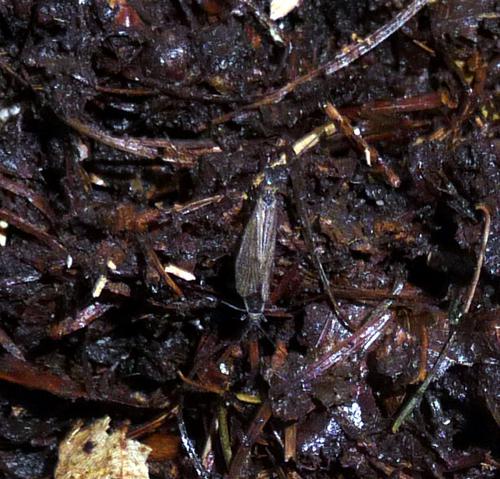Sightings of adult Land Caddis Enoicyla pusilla and a mating pair, Worcestershire, October 2012
Harry Green and Brett Westwood.
On 8th October 2011 members of a Wyre Forest Study Group (WFSG) outing including one of the authors (BW) in Rock Coppice discovered several male land caddis Enoicyla pusilla in oak-leaf litter (Fig. 02.). The males were typically restless, but flying short distances between leaves or other low vegetation no more than 30cm above the ground. As they seemed to be localised, we searched in the moss and leaf litter and soon found a wingless female, crawling through the dead leaves (Fig. 01). The weather was overcast, rather damp with little or no sunshine.
On 13th October 2012, the authors while on a WFSG field meeting again found two male Eniocyla pusilla on leaf-litter on the slopes of a dingle at Hawkbatch Valleys. On gently raking away the topmost leaves, they uncovered two females at the same spot, looking rather like large springtails but easily identified by their long legs and constantly waving antennae. The males were apparently reluctant to leave the area and, as in Rock Coppice, and were hard to find elsewhere, which suggests that they may have been assembling in response to cues from the females. Being flightless, it is possible that pheromones are used by the female to lure in the winged males (Fig.s 3, 4, & 5).
Land Caddis near Astley Mill
During the morning of 18th October 2012 one of the authors (HG), together with Dave & Jane Scott, and Mike Averill visited a small woodland plantation (larch, poplar) near Astley Mill which was for sale by auction. Just across the road from the wood is an enormous old oak pollard grid referenceSO7819 6737 (Fig. 05.) situated on a wooded bank (oak, hazel) which we decided to record for the ancient tree register (6.85m chest height circumference). HG noticed a good layer of interesting oak and hazel leaf litter beneath the tree and searched therein for land caddis larval cases (Fig. 06.). After scrabbling around for a few minutes one of us suddenly realised there were 20-30 male land caddis flying about. HG said “look for females!” A task for which we are ill-equipped! (poor eyesight, poor ambient light). However, Jane Scott noticed one male dip down and - amazingly - joined what looked like a female. The two were caught in a specimen tube confirming the fact. We tipped them back onto a litter and after the male had skittered about for a few seconds they mated! (Figs. 7 & 8). Other males appeared in the immediate vicinity and one other seemed to also mate with the female who then started to crawl into hiding amongst the leaf litter leaving several males skittering about. Had she switched off pheromone attractants?
The excitement of observing this behaviour, hitherto un-recorded in the wild in Britain (as far as we know) was almost too much! We all attempted to take photographs but most were out of focus because of poor light and camera shake. Mike Averill obtained the best ones.
We visited the site again on 23rd October 2012 and male land caddis still about but no females were found. These observations and others add confirmation that adult land caddis are active only in October.
Our land caddis records hold only one other from monad SO7867 in which Astley Mill is situated. This was by M. C. Clark (1984) who found larval cases in plant litter on 15th February 1980 under mat of grass and other vegetation in marshy ground, in itself an unusual habitat. However, Malcolm Clark was a mycologist who spent a great deal of time on his knees searching for micro-fungi and made others finds in similar places. Further searches are required in the area to add to records of Land Caddis distribution.
Reference
Clark, M.C. 1984. Proceedings of Birmingham Natural History Society. 25 (2):108.
Images
Fig.01. Female Land Caddis, Rock Coppice. Rosemary Winnall
Fig.02. Male Land Caddis Rock Coppice. Rosemary Winnall
Fig.03. Male Land Caddis, Hawkbatch. John Bingham
Fig.04. Male Land Caddis, Hawkbatch. John Bingham
Fig.05. Female Land Caddis, Hawkbatch. John Bingam.
Fig.06. Ancient oak beneath which male and female Land Caddis were found. Harry Green
Fig.07. Leaf litter beneath ancient oak where Land Caddis were found. Harry Green
Fig.08. A pair of mating Land Caddis beneath ancient oak. Mike Averill
Fig.09. A pair of mating Land Caddis beneath ancient oak. Harry Green


